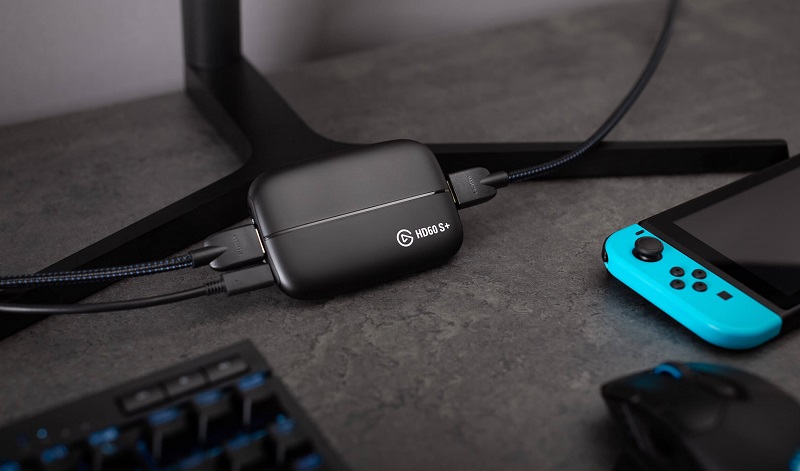

Digital zoom is useful on a webcam because zooming in gives you some control over camera positioning (tilt/pan), which is handy if your webcam isn’t ideally positioned.
#ELGATO 60S PRO#
This wider field of view is useful not only because it allows you to display an unnecessary amount of your home office, but also because it adds 4x digital zoom (the C920s Pro also offers digital zoom through Logitech’s Logi Capture software). The C930e has the same sensor as the C920s Pro, but it has an upgraded lens with a wider field of view - 90 degrees versus the C920s Pro’s 78 degrees. Read: Insta360 Link Review Best Budget Webcam 4K resolution isn’t even possible in most web conferencing apps, and capture modes such as “portrait mode,” “top-down mode,” and “desktop mode” are fun to play with but aren’t terribly beneficial unless you already know how you’re going to use them. Realistically, the Link is probably overkill for all but a very small user demographic. The Link is a very impressive webcam - maybe a little too impressive.

This, combined with the webcam’s 3-axis gimbal and AI-powered movement tracking, makes the Link a very powerful contender for content creators who move a lot, or for professional or educational presentations. Most webcams have difficulty adjusting between different lighting scenarios (especially quickly), and while the Link isn’t perfect, it’s very good at adjusting on the fly. But - more importantly - the Link has some of the best auto-exposure, color reproduction, and auto-focus we’ve ever seen in a webcam. The Link offers unparalleled image quality, thanks to its 1/2-inch sensor and 4K resolution. Read: Logitech Brio 500 Review Best Webcam for Content Creators

If you plan on zooming in to crop out your background, you may prefer the 2K WB5023 Dell Pro Webcam, which is similarly priced to the Brio 500 and also offers impressive out-of-the-box performance.
#ELGATO 60S 1080P#
Most web conferencing apps limit your streaming resolution to 1080p or 720p, but that doesn’t mean a webcam with a higher resolution is wasted.
#ELGATO 60S UPGRADE#
For the average person looking to upgrade their webcam from whatever’s built into their laptop’s bezel, the Logitech Brio 500 offers the best out-of-the-box performance at a reasonable price ($130). The Logitech Brio 500 shows that resolution isn’t everything - it may have the same surface-level specs as older Logitech webcams, such as the C920s and C930e, but it produces much better images. Logitech’s RightLight 4 technology, which is designed to compensate in less-ideal lighting situations, did an excellent job of producing flattering, evenly-lit images in both low- and overexposed-lighting conditions. We were especially impressed with the Brio 500’s auto-white balance, which is something almost all webcams struggle with - it wasn’t perfect, but it was almost as impressive as the auto-white balance seen on much pricier webcams, such as the Insta360 Link.
#ELGATO 60S SOFTWARE#
We've tested dozens of webcams, inspecting build quality, capturing photos in a variety of common lighting conditions, and playing with settings and software to determine the best webcam for you - whether you're trying to appear professional while working from home in sweatpants, or creating content for millions of viewers. Plus, if you've never looked at a close-up of your face in ultra-high-def 4K video - trust me, you don't want to.

#ELGATO 60S 720P#
Zoom, Google Meet, Microsoft Teams, etc.) don't support higher than 720p or 1080p video anyway. And it's not as easy as going for the highest specs: most of the common video conferencing platforms (e.g. It's impossible to recommend one or two perfect webcams for all users, because there are so many different ways to use webcams these days. Today's webcams range from standard HD (1080p) to 4K resolution and have increasingly larger lenses and sensors, and many feature impressive internal AI-powered tech that can do everything from improving low-light performance to tracking face and body movement. The good news is that the external webcam market also looks like it'll stick around - the pandemic spawned a slew of new webcams (and webcam makers) and spurred innovation. And while we're slowly returning to offices in the post-pandemic era, it looks like remote working is likely to stick around (at least part-time). But since the pandemic made remote working routine, the market for external webcams has exploded. They weren't good, but we didn't use them enough to care. Pre-pandemic, webcams were mostly an afterthought - built into your laptop's bezel as a convenience, nothing more.


 0 kommentar(er)
0 kommentar(er)
